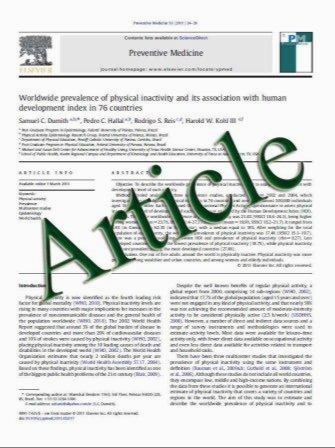Inhibition of focal adhesion kinase suppresses the adverse phenotype of endocrine-resistant breast cancer cells and improves endocrine response in endocrine-sensitive cells
- نوع فایل : کتاب
- زبان : انگلیسی
- مؤلف : Stephen Hiscox Peter Barnfather Edd Hayes Pamela Bramble James Christensen Robert I. Nicholson Peter Barrett-Lee
- چاپ و سال / کشور: 2010
Description
Acquired resistance to endocrine therapy in breast cancer is a major clinical problem. Previous reports have demonstrated that cell models of acquired endocrine resistance have altered cell–matrix adhesion and a highly migratory phenotype, features which may impact on tumour spread in vivo. Focal adhesion kinase (FAK) is an intracellular kinase that regulates signalling pathways central to cell adhesion, migration and survival and its expression is frequently deregulated in breast cancer. In this study, we have used the novel FAK inhibitor PF573228 to address the role of FAK in the development of endocrine resistance. Whilst total-FAK expression was similar between endocrine- sensitive and endocrine-resistant MCF7 cells, FAK phosphorylation status (Y397 or Y861) was altered in resistance. PF573228 promoted a dose-dependent inhibition of FAK phosphorylation at Y397 but did not affect other FAK activation sites (pY407, pY576 and pY861). Endocrine- resistant cells were more sensitive to these inhibitory effects versus MCF7 (mean IC50 for FAK pY397 inhibition: 0.43 lM, 0.05 lM and 0.13 lM for MCF7, TamR and FasR cells, respectively). Inhibition of FAK pY397 was associated with a reduction in TamR and FasR adhesion to, and migration over, matrix components. PF573228 as a single agent (0–1 lM) did not affect the growth of MCF7 cells or their endocrine-resistant counterparts. However, treatment of endocrine-sensitive cells with PF573228 and tamoxifen combined resulted in greater suppression of proliferation versus single agent treatment. Together these data suggest the importance of FAK in the process of endocrine resistance, particularly in the development of an aggressive, migratory cell phenotype and demonstrate the potential to improve endocrine response through combination treatment.
Breast Cancer Res Treat (2011) 125:659–669 Received: 2 September 2009 / Accepted: 16 March 2010 / Published online: 31 March 2010 Springer Science+Business Media, LLC. 2010


